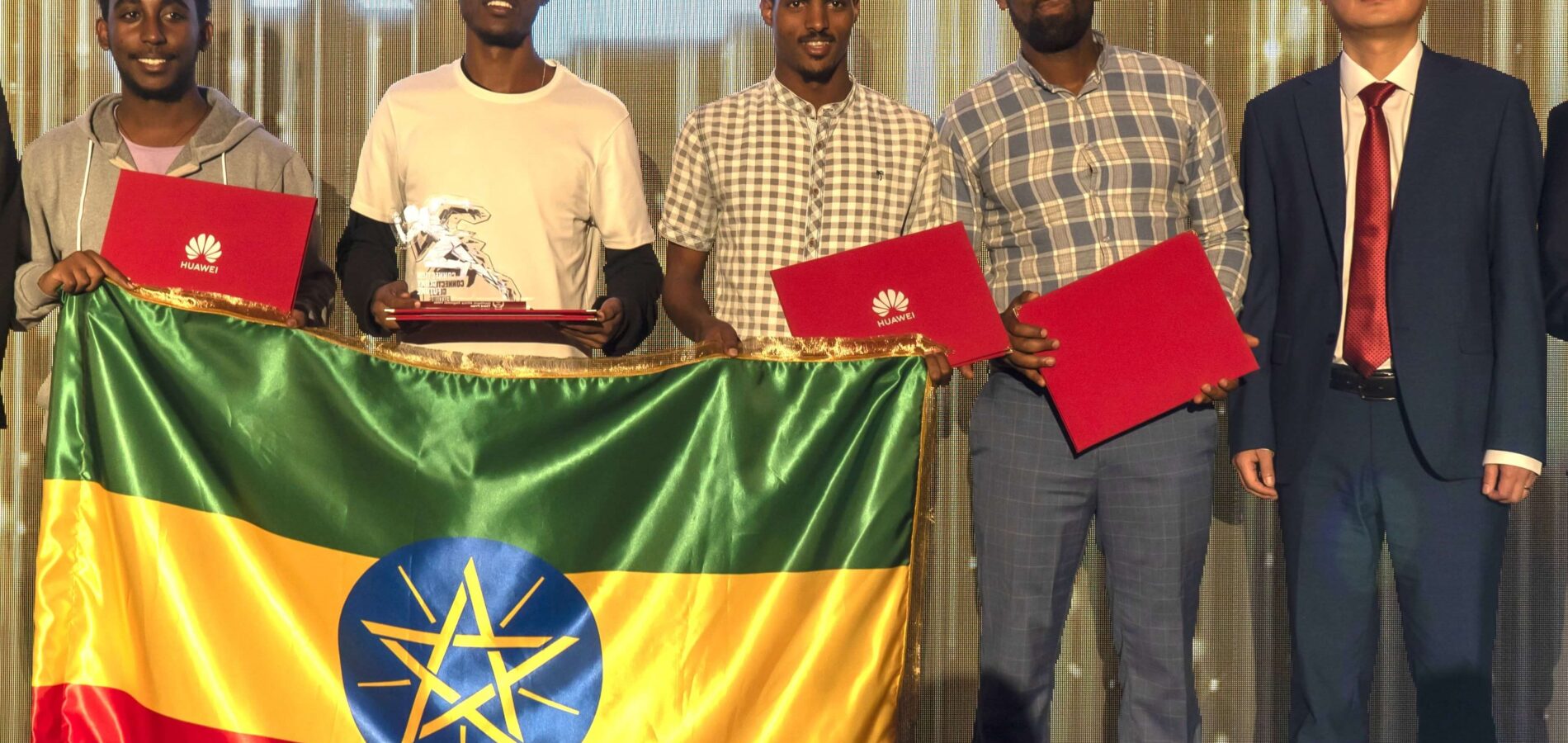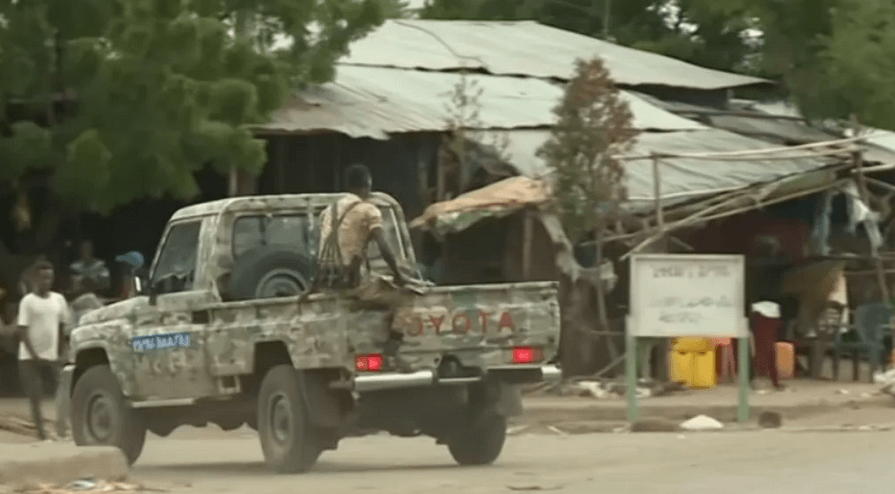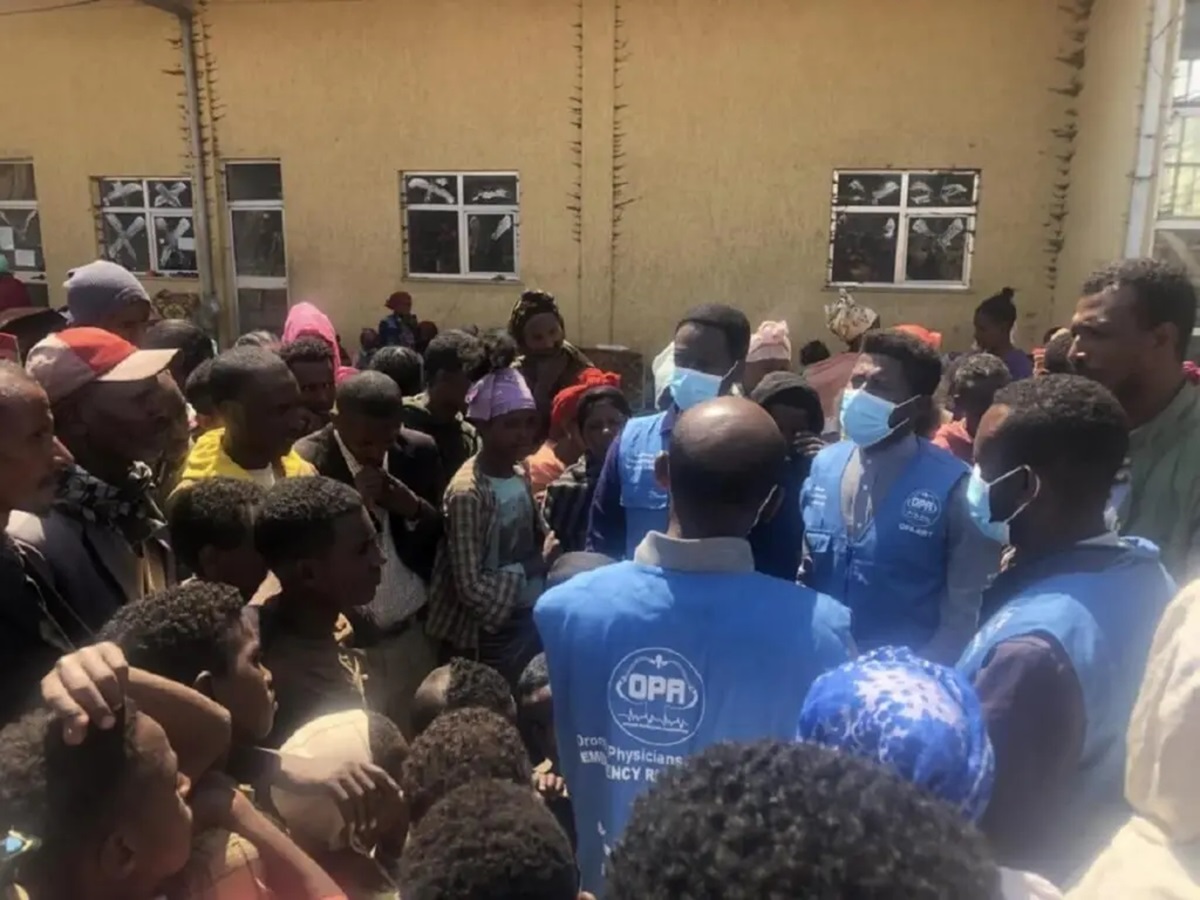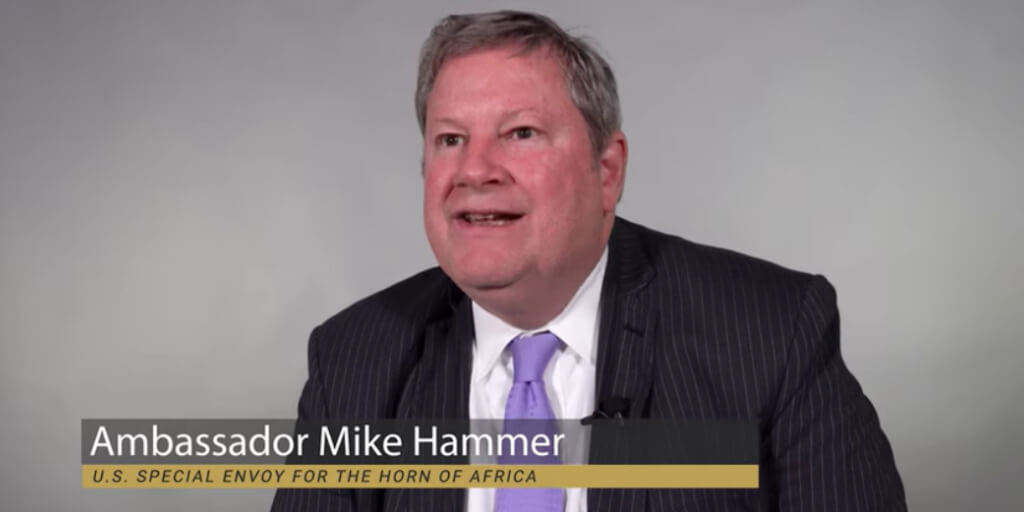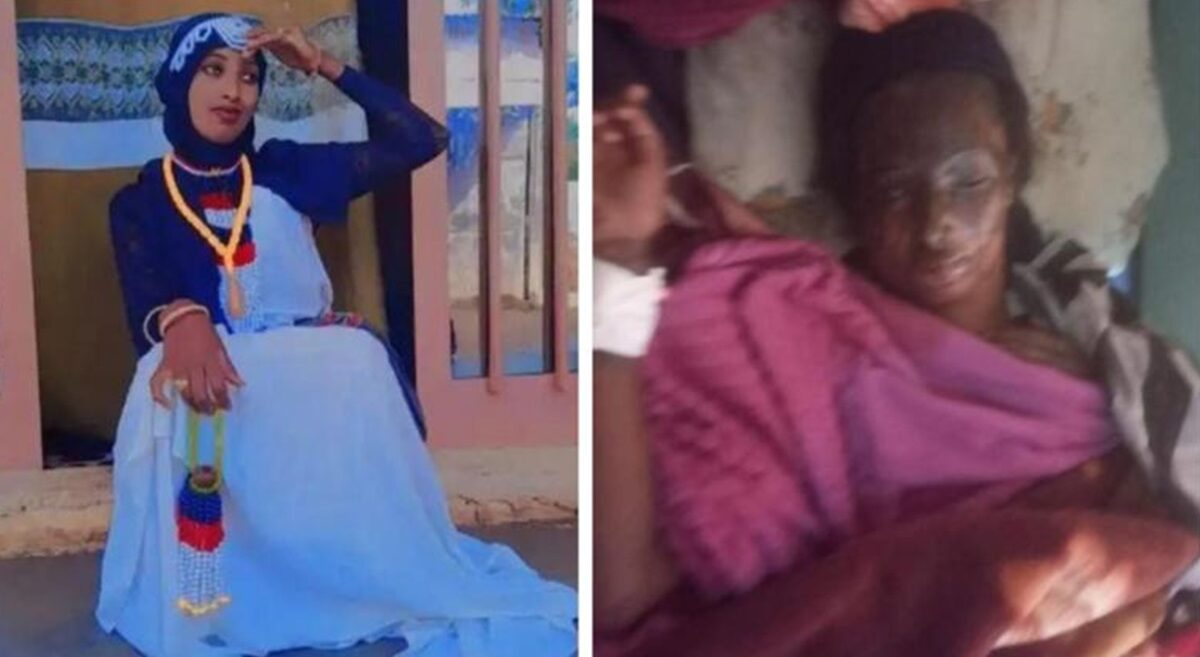Yadessa Bojia: On art and activism -“Where there is pain there is a loud noise”
Yadessa Bojia is a Seattle based Graphic Designer, Fine Arts painter and the Designer of the African Union (AU) Flag. Describing himself as a husband, parent and a brother, Yadessa uses his art as a “tool to create attentions around causes I consider worthy or lack a highlight.” Yadessa is best known for his relentless work of activism especially for his advocacy work around the global campaign to secure the release of Bekele Gerba, the prominent Ethiopian opposition figure who is jailed for the second time in the last five years only.
Addis Standard’s Mahlet Fasil interviewed Yadessa on his art work, his activism and more. Excerpts:
Addis Standard – You are known as a man who possesses multidisciplinary talents, one of which being creative art. But you combine that with activism and have done several creative works to boost advocacy works such as the #FreeBekeleGerba campaign. Why do you do that? Why not only focus on the artwork?
Yadessa Bojia – Because I believe art can create awareness around issues that communities lack to give attention to. Issues like human rights and the struggle to secure them. Before I get to my work on #FreeBekeleGerba I would like to briefly describe a case here in Seattle. A few years ago, Hanna Alemu, an adoptee from Ethiopia was starved, beaten and killed by her adoptive parents. The case was neglected (for about six months) but once the coroner’s office released an Autopsy report, it showed a lot of abuse in her body as well as the extreme weight loss that indicated she was starved before her death. As a local Ethiopian diaspora, I was one of the people who were very furious about Hanna and I started using my art (painting and music as well as social media activism) to shed light on her plight. Thanks to the local diaspora communities, local adoptive families, prosecutors’ office and independent activists like myself her adoptive parents were found guilty and were sentenced to lengthy prison term. Cases like this and other activism works using art showed me the values of art as a tool to highlight and affect true change in society.
With regard to my activism work to boost the #FreeBekeleGerba campaign, as you know he is not the first politician or human rights activist to be imprisoned but what makes his case very interesting to me is the fact that his accusers are not able to show a shred of evidence against him. Bekele’s case resonates with what is happening on the ground in Oromia and other parts of Ethiopia today. If you go back and see the video of him talking about land grab years before the issue became public record and how the government reacted to his assessment, one can see how far ahead of the issue he was at the time. I met Bekele in Washington, DC, during the OSA conference in July 2015 and his push for nonviolent struggle to secure Oromo farmers’ rights was very appealing to me because his remedies are something that gives the country a genuine change with less bloodshed and less vitriol. Unfortunately he was thrown into jail and what we have now on the ground is bloodshed and vitriol. This is why I put my effort around the #FreeBekeleGerba campaign because he deserves to be free. The same is true for other political prisoners whether it is Andualem Arage, Abraha Desta (thankfully Abraha is now released) or a given Oromo farmer who is yanked out of his farm just because he refuses to be pushed. Highlighting on #FreeBekeleGerba campaign indirectly sheds light on others and that is why the slogan is always “Free Bekele Gerba and other political prisoners.”
AS – Is there a particular reason when it comes to Ethiopia that triggers your sense of using your creative talent for the purpose of advocating or speaking for the wronged?
YB – Yes. My family and I were wronged before. I lost my father when I was two years old – he was killed with my brother and a close friend and one of his employees in his own land and home. I lived through a life of fear and intimidation to the point where I can’t even mourn my father. For me to grow up and ignore the cry of others just like my tears were ignored is not acceptable. I will forever dedicate my talent and resources to speak up against a government that oppresses its own people. This is not only going to be specific to the current government in Ethiopia; I will do it to the next one if they don’t respect those basic human rights. This is to say, I don’t have any personal hatred against the current government just for the sake of it, but I believe in calling what I see in front of me as I see it. What I am seeing now is a government that does not respect the right of citizens, that does not hesitate to torture and kill its citizens, that does not hesitate to imprison them with little or no due process.
AS – There are critics who say your works of art/advocacy is mostly focused on Oromo people who are and have experienced extreme form of injustice in the hands if the state in Ethiopia. Your exhibition at this Year’s Oromo Studies Association (OSA) Conference at the end of July in which you have displayed names and pictures of Oromos killed within the last nine months is just one example to mention. How do you respond to such critics?
 YB – Quite the contrary my works always represent the entire Ethiopian population. What makes a lot of people think my work focuses on Oromo people only is because the Oromo are going through disproportionally overwhelming amount if oppression and where there is pain there is a loud noise. In a much heightened ethnicity complex that is going on in Ethiopia today the name Yadesa also stands as a sore thumb. So let me explain why I said my work represents all. I did continually write and argued that human rights do not see colors and ethnicity. When our brothers are killed and forced out of their land in Anuak, I was one of the few voices using social media and blogs to speak against it. The same was true with the random killings of post 2005 elections. I spoke against violating the rights of protesters and denounced the killings. When the Ambo University students were killed I did the same. In one of my articles in my blog that was titled “The Arc of the Moral Universe”, I stated:
YB – Quite the contrary my works always represent the entire Ethiopian population. What makes a lot of people think my work focuses on Oromo people only is because the Oromo are going through disproportionally overwhelming amount if oppression and where there is pain there is a loud noise. In a much heightened ethnicity complex that is going on in Ethiopia today the name Yadesa also stands as a sore thumb. So let me explain why I said my work represents all. I did continually write and argued that human rights do not see colors and ethnicity. When our brothers are killed and forced out of their land in Anuak, I was one of the few voices using social media and blogs to speak against it. The same was true with the random killings of post 2005 elections. I spoke against violating the rights of protesters and denounced the killings. When the Ambo University students were killed I did the same. In one of my articles in my blog that was titled “The Arc of the Moral Universe”, I stated:
How is it [that] we justify the killings of innocent college students just because they use their God given right to disagree and question their government? How is it [that] we keep quiet while we see poor farmers being thrown out of their ancestral land to make way to Chinese companies and government cronies in the name of progress? How is it [that] we call ourselves Ethiopians when we look the other way when our Oromo, Anuak, Amhara brothers and sisters are killed and abused in front of us? Does it make a difference if a mother that buries her baby is from Oromo or Tigrai? What makes one more or less painful or important? Why are we only incensed when we feel pain close to us and why are we totally deaf to the weeping of children from far? This is not a struggle between ethnic groups; this is a struggle against a system that tries to [pity] us against one another. We all need to have a moral compass to stand in front of our kids and condemn injustice.
Now that said, one has to understand the singling out and the years of abuse of Oromo farmers, students and politicians in the hands of the current government. The widely known say that goes “the prisons in Ethiopia speak Afaan Oromo” is not a joke; it is a true sentence in a saddest form. I have no worries if people think I stood for the Oromo or identify myself as one. I am as an Oromo as a Chocho full of yogurt, but I am also a person who believes that Oromos have a right just like any others in Ethiopia and vice versa.
AS – Off the topic of activism, many people know you by your design of the African Union Flag, which was adopted at the 14th Ordinary Session of the Assembly of Heads of State and Governments on 31st January 2010. Tell me what inspired you to do that design, which ultimately led you to win the competition?
YB – As you can see from the design of the flag, the central part of my design is a sunray that is shining on Africa. This is by design to show the new dawn in Africa in which Africans can decide their own fate by building democratic institutions that leave long lasting foundations for true progress and prosperity. That is the vision I had at the time when I was designing it and I was very pleased the heads of state shared that vision with me to choose it. Yes we have our ups and downs and the frictions in every angle of the continent, but there are a lot of great signs that Africa is heading to become a strong continent. We need to know though the vision is not going to be a reality if we left the continent to some leaders and political parties that are abusing their positions; we all need to be active participants of the struggle to create a better tomorrow. This past year I was asked by the Economic, Social and
Cultural Council of the African Union (ECOSOCC) to present my ideas related to art and Agenda 2063 at the Global Africa Diaspora Convention 2015 in Baltimore WA and I am happy to say that some of the ideas I presented were included in the report.
AS – I heard about your contribution in re-creating the artistic design for the display of Lucy, Ethiopia’s 3.2-million-year-old Australopithecus Afarensis, during Lucy’s six years and 11 cities tour to the US. Can you enlighten our readers on that?
YB – In the second leg of her stop Lucy came to the Pacific Science Center in Seattle WA. At the time of her visit, the local Ethiopian communities saw an important opportunity to showcase our country beyond what can be seen through Lucy. With the help of Pacific Science Center and the head curator Diana Jones, we were able to participate by helping the exhibit. I was tasked in creating graphics that include the multi ethnic view of our culture and I did so by working on vector motifs that was inspired by traditional clothes of different ethnic groups. We were also able to showcase Ethiopian Arts by doing an art show side by side with the exhibit and local artists like Sultan Mohammed, Fasika, I and others were able to show the vast color and art styles. We were also able to publish a receipt book with artistic drawings entitled “Receipts from Afar and Near”: The Hidden Treasures of Ethiopia.
AS – Recently one of your works called “The Messengers” is featured among a collection of designs showing “how diverse and universal the refugee experience truly is”, according to organizers. How did you become a part of this project?
YB – The poster series was organized by Creative Action Network (CAN). CAN is a global community of artists and designers, harnessing their talents for good and it was organized by artists from around United States [who are] mostly involved in politically charged art with a tinge of activism. I have been working with them for a while and one of the famous works I did for them was the “See America” poster series for the Martin Luther King Monument of Washington, DC. For the specific project you mentioned, the well-known Anti-Defamation League partnered with CAN to come up with a poster series under the umbrella of “WE ARE ALL STRANGERS”. I believe the atmosphere that was created by Trump towards immigrants in America was the reason behind the poster series. I am proud of my contribution and to make things even more interesting the design was selected to be shown in the office of New York Governor, Andrew Cuomo.
AS – A quote from you describing “The Messengers” says: “This painting depicts my life as an immigrant from my native country of Ethiopia. As the exodus of Jews from Egypt, this painting tries to capture the passage of an immigrant to the new world and the unpredictability and the struggle one goes through to reach the Promised Land.” It’s been more than 20 years since you have emigrated from your country Ethiopia. Are the memories still fresh for you to have said that?
YB – Honestly 20 years is not that long in an immigrant’s mind set. The more you stayed out of the country the more you struggle to find your true identity in relation to the new and the old world. In 2006, I showed a month long art show in Seattle’s Pioneer square titled “The invisibles”. The purpose of that art show was to show the invisibility of an immigrant in finding a place in the old and new world and how when time progressed, his or her identity keeps on fading in both places to create the invisibility. Yes in the time of the exodus for the slaved Jews the Promised Land might be Israel but in today’s world the Promised Land is an identity one seeks to find oneself in. It is a constant search, a search that I might not stop seeking but might one day be answered by my kids or grand kids.
Editor’s note: This interview was first published on Addis Standard print magazine in Sep. 2016.
Inside photo: Yadessa Bojia with Bekele Gerba, a prominent oppostion politician in Ethiopia’s prison.
All Photos were provided by the interviwee


